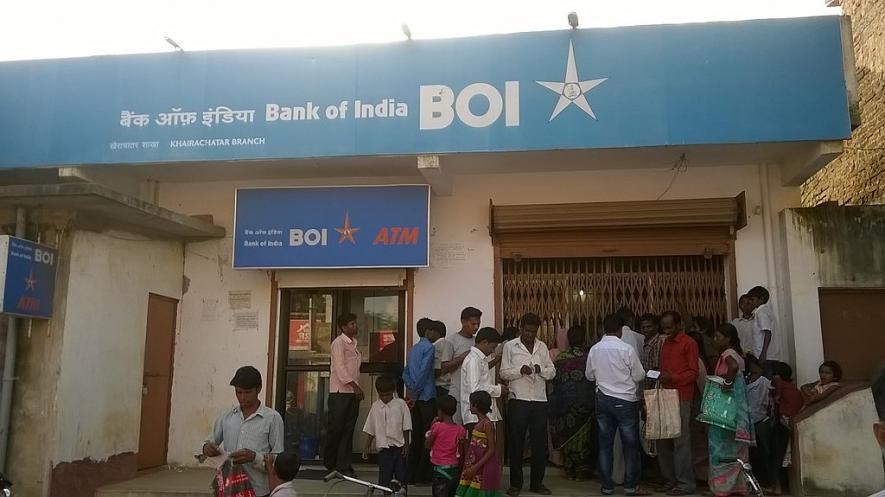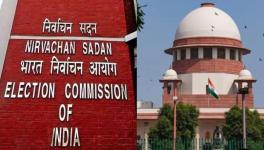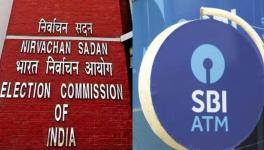Banks Must Be Publicly Owned. Here’s Why

The recent troubles of the public sector banks (PSBs) in India have encouraged the private corporates and their bodies to redouble their call for the privatisation of the Indian banking system. Such demands have come even though it is plain to see that it is the private banks which are far more prone to failure compared to the public sector banks. As many as 36 private banks have failed in India since 1969.
The calls for the privatisation of PSBs also tend to ignore the reasons for the nationalisation of India’s major banks. The fact of the matter is that the private banks were not serving the purpose that the banking system was supposed to serve in a developing country like India.
Private banks were a failure in taking banking services to the rural areas, and in extending credit to farmers and small scale industry. The private banks were also going bust at a phenomenal rate – 736 banks failed or had to be taken over by other banks during the two decades before nationalisation.
It was only after nationalisation, with the expansion of the rural banking network by public sector banks, that there was a major increase in the number of rural and semi-urban banks in India. As Hemendra Hazari pointed out in a recent article:
“In June 1969, before nationalization, there were only 1,833 rural and 3,342 semi-urban offices of the banks. By March 1991, these figures rose to 35,206 rural offices and 11,344 semi-urban offices. Total offices during this period increased from 8,262 to 60,220. Such a massive expansion in bank branches, which to a significant extent reached banking to unbanked sectors of the economy, would not have taken place under private ownership, since private investors are concerned with profits over a relatively short period. It was only the Government which could direct the banks to follow a broader developmental agenda.”
The expansion of the public banking network in rural areas meant that the share of rural branches in the total number of scheduled commercial banks rose from 22 per cent in 1969 to 58 per cent in 1990.
It was nationalisation which allowed the government to direct a share of total credit to sectors that it designated as priority sectors, such as agriculture and small scale industry. These were sectors which were practically ignored by private banks. Post-nationalisation, the share of small scale and other priority sector advances in total credit increased from 22 per cent in 1972 to 45 per cent at the end of the 1980s.
Bank nationalisation also ensured that the banking system remained relatively stable, even when numerous banks in the advanced countries of the West collapsed under the impact of the worldwide economic crisis from 2008 onwards.
This is no accident, and is not just an issue of mismanagement on the part of individual private banks. The point is that a banking system dominated by private banks would be structurally more unstable.
CP Chandrasekhar, Professor at the Centre for Economic Studies and Planning, Jawaharlal Nehru University outlines the reasons for this in a 2009 paper, in which he traces the roots of the crisis in the US to a transition in the banking structure of that country.
The Glass-Steagall Act of 1933 had erected a wall between commercial banking and investment banking. The system was a highly regulated one, and the banking structure was one based on a “buy and hold” strategy as Chandrasekhar puts it. In simpler terms, this meant that the banks took in deposits and gave out loans, and the net interest margin was the main source of the banks’ returns. The rates of return were relatively small.
This system served the US well during the Golden Age of high growth from the end of the Second World War to the early 1970s, but the regulation posed a contradiction. The banking system was dominated by private banks, and they wanted higher returns comparable to non-banking sectors. Such high returns were not possible as long as such tight regulations were in place, and hence the private banks started clamouring for de-regulation. Once the government responded to such pressures and brought about de-regulation, the banking structure transitioned to an “originate-and-sell” strategy, in which “credit risk was transferred through a layered process of securitisation that created the so-called toxic assets”. The banks ended up engaging in far more riskier activities which were more susceptible to manipulation as well as the vagaries of the financial markets.
Therefore, once it is recognised that the banking system is the core of the financial sector, and that its stability is essential for the good of the economy, it will have to be accepted that banks should function in a highly regulated environment which might earn them relatively low returns.
But that, in turn, would mean that the banking system will have to be public, so that the pressure to dismantle regulations can be avoided.
“So capitalism appears to need a publicly owned banking system for its own proper functioning,” says Chandrasekhar.
Get the latest reports & analysis with people's perspective on Protests, movements & deep analytical videos, discussions of the current affairs in your Telegram app. Subscribe to NewsClick's Telegram channel & get Real-Time updates on stories, as they get published on our website.























